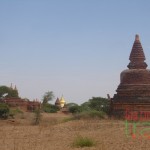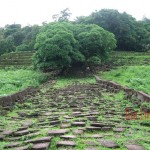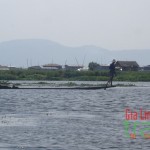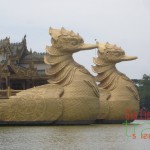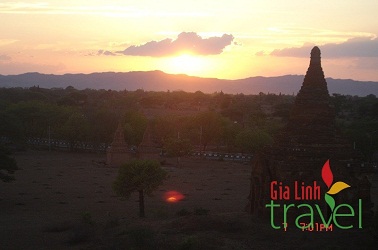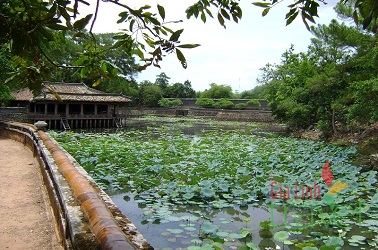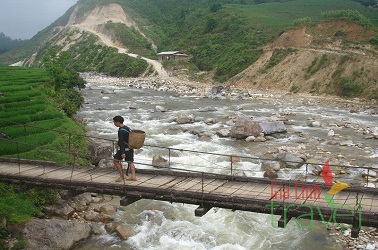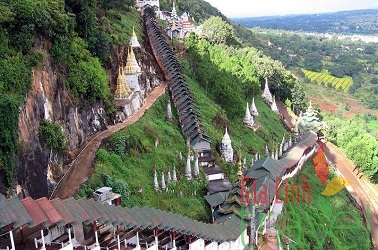Myanmar, Thailand, Cambodia and Laos 23 days tour
GET THE BEST EMOTION FOR CLASSIC CULTURE
I am writing to thank you for the wonderful trip we had ! Everything was perfect, well planned and well organized!
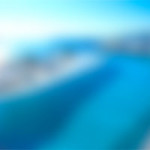
Daniel Johnson
+84 972861122
CALL US
Destinations: Yangon/Bagan/Mandalay/Heho/Bangkok/Ayuthhaya/Korat/Arany Aprathet/Battambang/Siem Reap/Phnom Penh/Kratie/Stung Treng/Dongkralo/Khong Island/Wat Phou/Pakse/Vientiane/Luang Prabang/Pak Ou Cave
Whether you are looking for a cultural visit or relaxing trip to Southeast Asia, this tour has it all. The tour offers an authentic touch to the magnificence of four countries: Myanmar, Thailand, Cambodia and Laos.
Start the tour by discovering the mysterious Myanmar with the glittering Shwedagon in Yangon. Enjoy the miracle sunset, surprising Golden rock, holy stupas of Mandalay and exotic floating villages of Inle Lake. You will explore the beauty of other countries by border. Continue the trip to Thailand; you’ll discover Bangkok’s beautiful, gleaming temples and the glorious Grand Palace, impressive Khmer temples and the pottery village.
Cross the border to explore the awe-inspiring temples of Angkor and the bustle of Phnom Penh. The trip ends with experiencing unspoiled natural surroundings and delving into local cultures of Laos
PROGRAMME IN DETAILS
B=Breakfast, L=Lunch, D=Dinner, G=Guide
Day 1: Yangon arrival (G)
Arrive in Yangon where you will be welcomed by your local tour guide and transferred to your hotel to drop off you luggage. If you arrived by mid day flight, we may proceed for lunch. After lunch, a walk through “downtown” Yangon, a diverse mix of faded colonial architecture from the British times, and high-rises built by more recent investors; Sule Pagoda, built in the early 3rd century is a landmark in the city centre. Late afternoon visit the magnificent Shwedagon Pagoda of Rudyard Kipling fame and one of Myanmar’s most sacred places. The massive bell shaped stupa is plated with gold and the tip of the stupa is set with diamonds and rubies, sapphires and topaz – a stunning sight as the sun sets and a most fitting place to begin our trip in this “Golden Land”. Overnight at the Hotel.
Day 2: Yangon/Bagan (B, G)
This morning we head for the airport to get the early morning flight to Bagan. Check into the hotel and depart for a sightseeing excursion around the Bagan Archaeological Zone World Heritage Area. A comprehensive exploration of Bagan includes Nyaung Oo market; Shwezigon Pagoda, the prototype of later Myanmar stupas; Kyansittha Umin; Wet-kyi-inn Gubyaukgyi Temple with exquisite mural painting of 13th century and Htilominlo Temple. In the afternoon, after a visit to lacquer ware workshops; continue to Manuha Temple built by exile King Manuha; Nanphaya, said to have been the residence of King Manuha; Ananda Temple, architectural masterpiece and Oak-Kyaung monastery decorated with multi colour mural paintings. Enjoy the breathtaking sunset from one of the temple of Bagan. Overnight at the hotel in Bagan.
Day 3: Bagan/Mandalay (B, G)
After breakfast at hotel, transfer to Nyaun U airport for flight to Mandalay. When you arrive at Mandalay airport, drive to ancient capital of Amarapura, the city of Immortality for a visit to Bagaya Monastery with a famous collection of Buddha images; weaving industries, two-century old U-Bein teak bridge on the Taungtaman Lake and observe the lunch process of thousand of monks who take their last meal of the day at 10:00 am in total silence. Proceed to Mandalay and check in at the hotel. After refreshment, you will take a sightseeing tour of Mandalay which includes Mahanumi, a life like Buddha image. Mandalay is the last capital of Myanmar and that make her to be the best place to see all the traditional arts and crafts. Start visiting gold leaf making work-place and see how the gold leaf is being made by hand in a traditional way. Continue visit the Old Palace grounds; Kuthodaw Pagoda, known as the world’s largest book for its 729 marble slabs inscribed with the Buddha’s Doctrine; Golden Palace Monastery, noted for its exquisite wood carvings and enjoy the panoramic view of the city from Mandalay Hill. Overnight at the hotel in Mandalay.
Day 4: Mandalay/Heho/Inle Lake (B, G)
After breakfast, depart the hotel for flight to Heho on the Shan plateau. Transfer by road to Inle Lake and transfer to our hotel by long tail boat across the lake. Upon arrival, check in at hotel. In the afternoon, we plan to spend the day visiting villages and sampling the spectacular array of traditional handicrafts. You will see the unique method locals use to row their boats, fishermen with their own style of fishing, floating farms and gardens and a handloom weaving cottage with its own showroom. You will visit Phaungdawoo Pagoda which houses the five most revered Buddha Images in the southern Shan State. Overnight at the hotel on Inle Lake.
Day 5: Inle Lake/Heho/Yangon (B, G)
We are heading back down country today to return to the airport at Heho for our flight to Yangon. Our route takes us back to Heho and down the escarpment to Nyaung-Shwe for a busy local market. Check in at airport and fly back to Yangon. Upon arrival, the car will take you to the hotel. The rest of the day will be your own for strolling the city. Overnight in Yangon.
Day 6: Yangon/Bangkok (B, D, G)
In the morning, you will free for relaxing before the car takes you to the airport for your flight to Bangkok. Arrive in Bangkok and transfer to your hotel in the city. Meet on arrival at the airport and transfer to sightseeing to Wat Trimit to witness its 5.5 tons weight of the Golden Buddha Image located at the conner of China Town. You will have dinner cruises with live music lighten Bangkok and give you a great first impression of this bustling metropolis. Overnight in Bangkok.
Day 7: Bangkok/Ayuthaya/Pimai/Korat (B, L, G)
Depart from Bangkok to Ayuthaya, which is beautifully located on an island at the confluence of three rivers. Visit Wat Chaiwathanaram occupying a magnificent position on the West bank of the Chao Phraya River. Drive through the historical part of this former capital of Siam and then continue to Pimai. En route short stop the local fruit market at Klang Dong. Continue to the charming little town of Pimai northeast of Korat, known for the magnificient Khmer sanctuary of Prasat Hin. Visit the museum and Historical Park. Return to Korat with a short stop at one of the biggest Banyan Trees in Thailand.
Day 8: Korat/Dan Kwian/Phnnom Rung/Arany Aprathet (B, L, G)
After breakfast, visit the pottery village of Dan Kwian. The region of Korat is famous for its beautifully crafted pottery. Continue to Phanom Rung, which is the finest Khmer Temple in Thailand and gives more than only a good idea of Angkor Wat in Cambodia. Similar in layout to Phimai, both monuments are believed to have been the prototype for the famous Angkor Wat. Close by there is Muang Tam, another impressive Khmer temple predating Phanom Rung by about 120 years. After lunch, continue to the border town of Aranyaprathet with stops at ancient Khmer ruins along the Thai-Cambodian border.
Day 9: Arany Aprathet/Siem Reap (B, L, D, G)
This morning we cross the border to Cambodia and travel via Sisophon to Siem Reap with lunch at a local restaurant en route. Arrive in Siem Reap late afternoon and check in at your hotel. If time permits, visit “Les Artisans d’Angkor – Chantiers Ecoles” and watch the sunset at Angkor Wat. Dinner at your hotel and overnight.
Day 10: Siem Reap (B, L, G)
Breakfast at hotel. Visit the Roluos Group. The monuments of Roluos, which served as the capital of Indravarman I (reigned 877-89), are among the earliest large, permanent temples built by the Khmers and mark the beginning of Khmer classical art. Preah Ko erected by Indravarman I in the late 9th century dedicated by the King to his ancestors in 880. Bakong the largest and most interesting of the Roluos group temples, with his active Buddhist monastery just to the north of the east entrance. Lolei built on an islet in the center of a large reservoir (now rice fields) by Yasovarman I, the founder to the first city at Angkor. Return to your hotel for lunch. In the afternoon, continue your temple tour to the unique interior brick sculptures of Prasat Kravan, Srah Srang (“The Royal Baths” was once used for ritual bathing), Banteay Kdei (surrounded by 4 concentric walls), Eastern Mebon, (guarded at its corner by stone figures of harnessed elephants, some of which are still in a reasonable state of preservation) and the mountain-temple of Pre Rup.
Day 11: Siem Reap (B, L, G)
Visit the antique capital of Angkor Thom (12th century): the South Gate with its huge statues depicting the churning of the ocean of milk, the Bayon Temple, unique for its 54 towers decorated with over 200 smiling faces of Avolokitesvara, the Royal Enclosure, the Phimeanakas, the Elephants Terrace and the Terrace of the Leper King. Lunch at your hotel. In the afternoon, visit the most famous of all the temples on the plain of Angkor: Angkor Wat. The temple complex covers 81 hectares and is comparable in size to the Imperial Palace in Beijing. Its distinctive five towers are emblazoned on the Cambodian flag and the 12th century masterpiece is considered by art historians to be the prime example of classical Khmer art and architecture. Angkor Wat’s five towers symbolize Meru’s five peaks – the enclosing wall represents the mountains at the edge of the world and the surrounding moat, the ocean beyond. At sunset climb up Phnom Bakheng, one of the two hills dominating the plain of Angkor, from where you will have a spectacular view of the Western Baray and Angkor Wat.
Day 12: Siem Reap (B, L, G)
Breakfast at hotel. Morning, transfer to Banteay Srei temple (10th century), regarded as the jewel in the crown of Classical Khmer Art. Visit Banteay Srei then continuation to Banteay Samre, built in the third quarter of the 12th century. It consists of a central temple with four wings preceded by a hall and accompanied by two libraries, the southern example remarkably well preserved. Return to your hotel for lunch. In the afternoon, you will continue your temple visits to Neak Pean, a fountain built in the middle of a pool (representing the paradisiacal Himalayan mountain-lake), Ta Som and Preah Khan. Built by the King Jayavarman VII, Preah Khan is, like Ta Prohm, a place of towered enclosures and shoulder hugging corridors. Unlike Ta Prohm, however, the temple of Prea Khan is in a reasonable state of preservation and ongoing restoration efforts should maintain and even improve this situation. Then, visit Ta Prohm. One of the area’s most beautiful temples, Ta Prohm has been relatively untouched since it was discovered and retains much of its mystery.
Day 13: Siem Reap/Phnom Penh (B, L, G)
Breakfast at the hotel and transfer to pier to for local speedboat trip at 07:00 am to Phnom Penh. Arrival around noon time. At the end of dry season speed boat operation is limited due to the low water level. In this case the journey to Phnom Penh is flight. Afternoon Visit the Royal Palace, built by King Norodom in 1866 on the site of the old town, and the Silver Pagoda. Located within the grounds of the Royal Palace, the Silver Pagoda is so named because of its floor, which is made up of 5000 silver tiles. The treasures found inside include a solid gold Buddha encrusted and weighing 90 kilograms and a small 17th century emerald and baccarat crystal Buddha. End your afternoon with the visit of the Wat Phnom Temple, Phnom Penh’s namesake, from where you can enjoy views over the tree-lined avenues of the city during sunset. Overnight in Phnom Penh.
Day 14: Phnom Penh/Kratie (B, L, G)
Breakfast at hotel and drive to Kratie via Kompong Cham. Lunch at local restaurant. Arrival in Kratie and check in at hotel. In the afternoon, city tour of this small provincial town with its good examples of sumptuous colonial architecture. This tiny town on the Mekong is an unexpected delight, with a relaxing, indolent atmosphere. Further north stop at the best riverside vantage point from which to view the rare freshwater Irrawady dolphins which can be best seen late afternoon. Then, drive back to Kratie. Overnight in Kratie.
Day 15: Kratie/Stung Treng (B, L, G)
Breakfast in hotel then transfer by vehicle from Kratie to Stung Treng, a very laid back town located on the banks of the Mekong. Journey along the Mekong River basin through the villages of Sambok, Sre Sbov and Phumi Prek Preah. The Mekong River, which rises in Tibet, flows 315 km through Cambodia before continuing on through Vietnam to the sea. Overnight in Stung Treng.
Day 16: Stung Treng/Dongkralor/Khong Island (B, L, G)
Today you will cross into Laos by a local speed boat to the Cambodian-Lao border. A stunning boat trip of about an hour and a half over a deserted part of the Mekong river will bring you to Dongkralor the border. You must have Lao visa beforehand ! On completion of immigration formalities. The guide in the Laotian side who will pick up you and transfer to Khong Island. Khong Island is part of Siphandone, Laotian for ’4000 islands’. During the dry season thousands of shoals and small islands appear due to the descending water level, giving the impression of a vast area of islets. Overnight in Khong Island
Day 17: Khong Island (B, L, G)
Morning, cruise along the backwaters to explore Siphandone. Visit the surrounding islands of Done Ket and Done Som for a glimpse into the traditional lifestyle of the fishermen. Continue to Done Khone Island. Lunch at local restaurant in Ban Khone. Then visit Done Khone Island and hike along its ancient railway built by the French in 1897 in order to bypass the powerful rapids when transporting goods from Cambodia. Continue to Sumphamith Waterfall. In the dry season, the Irrawaddy Dolphins, one of the world’s rarest large mammal species, congregate at the base of the rapids to hunt the fish that survive in the deep pools. Spend a relaxing hour watching these extremely shy and endangered freshwater dolphins. Return by boat to Khong Island. Overnight in Khong Island.
Day 18: Khong Island/Wat Phou/Pakse (B, L, G)
This morning, departure for Pakse. Along the way you will visit Wat Phou. This Khmer temple was built in the 5th century thus predating Angkor Wat in Cambodia. In 2002 Wat Phou was declared a World Heritage Site by UNESCO. The walk to the upper part of the temple is steep, but the view over the surrounding countryside is rewarding indeed. Arrival in Pakse, check in hotel. Overnight in Pakse
Day 19: Pakse/Vientiane (B, L, G)
Morning transfer to airport for flight to Vientiane. In the afternoon, we take a sightseeing tour of Vientiane, to visit religious museums of Wat Sisaket, the oldest temple to have been survived from the Siamese war of 1828 and its cloister contains more than 8000 Buddha statues; Wat Ho Prakeo, the former home-temple of the Emerald Buddha statue or Pra Keo, but today it contains a collection of Buddha statues, antiques and all artifacts found in around Vientiane; That Luang Stupa, the single most important monument in Laos, which was built to cover the original small stupa containing a piece of the chest bone of Buddha; Patouxay (Arch de Triumph), built quite recently in commemoration of those who died during the wars in the past and it is today as the land-mark of Vientiane. Overnight in Vientiane.
Day 20: Vientiane/Vang Vieng (B, L, G)
We leave the capital early for our journey northbound; we will see some breathtaking scenery enroute as we pass through spectacular countryside towards the mountainous region. Along the way we visit the busy and colorful market of Thalat where various hill tribes come to trade goods and buy provisions. A next stop of our trip is Vang Xang, famous for the archeological site dating back 11th century. We reach our final destination Vang Vieng, which is nestled on a bend of the Nam Song River. Its stunning scenery with limestone outcrops remains unspoiled, despite recent developments with the advent of tourism. After checking into your hotel you are at your own leisure. Overnight in Vang Vieng
Day 21: Vang Vieng/Luang Prabang (B, L, G)
Heading 2km out of Vang Vieng town we explore the famous caves of Tham Jang, which was once used by the local people as a hideout from Chinese invaders. We also cross the river to Ban Huai Ngai, a very pleasant village where we can explore the different lifestyles of the locals. Upon leaving Vang Vieng, the roads begin to deteriorate; however the stunning mountain scenery makes for an interesting journey. We wind our way through the mountains to Luang Prabang. This town with its gleaming temple roofs, fading colonial architecture and stunning mountain backdrop has been claimed by UNESCO to be “the best preserved traditional city in South East Asia”. There is little traffic on Luang Prabang roads and monks in orange robes scurry in all directions carrying umbrellas to shade themselves from the sun. Overnight in Luang Prabang.
Day 22: Luang Prabang (B, L, G)
The former Royal Palace has been turned into a National Museum (closed Tuesdays). This interesting structure displays a collection of artefacts reflecting the richness of Lao culture dating from the days of the early kings right through the last sovereign. Today we also have enough time to explore some other landmarks, including the impressive stupa of Wat Visoun, the shrine of Wat Aham, the city’s oldest temple of Wat Sene and Wat Mai with its five tiered roofs. A visit to Luang Prabang would be incomplete without ascending the 329 steps to the top of Phousi Hill for a beautiful sunset view of the city and its glowing reflection on the Mekong River. Overnight in Luang Prabang.
Day 23: Luang Prabang departure (B, G)
After breakfast; there will be free time for your own exploration of Luang Prabang City before catching a departure flight.
Price in US$ per person:
Our price includes:
- Breakfast and accommodation sharing a twin or double room.
- Pick-ups and transfers by private air-conditioned car as specified in the itinerary above
- Travel by private, air-conditioned car with an experienced, safe driver.
- Boat cruise as mentioned.
- Domestic flight tickets in Myanmar: Yangon-Bagan-Mandalay-Heho-Yangon with airport tax
- Domestic flight tickets in Laos: Pakse-Vientiane with airport tax
- The services of experienced English-speaking guides as indicated in the itinerary except leisure time
- Lunches and dinners, as specified, in the good local restaurants, picnics where suitable restaurants are not available
- Where necessary, entry fees for all visits as mentioned in the programme.
- Government tax & service charge
Our price does not include:
- International flight tickets and airport tax.
- Visas
- Other meals not mentioned.
- Drinks, gratuities, tips and personal expenses.
- Insurance.
Hotel list for Five Star standard:
- Yangon: Trader Hotel (***** sits at the centre of the capital, the perfect base for taking in the city’s distinctive and fascinating culture) or similar
- Bagan: Tharabar Gate Hotel (***** surrounded by more than 4000 ancient temples and Pagodas) or similar
- Mandalay: Sedona Mandalay Hotel (***** ideally located in the heart of the city and faces the majestic Royal Palace and Mandalay Hill) or similar
- Inle Lake: Inle Resort (***** perfectly situated in the Inlay Lake, one of the finest resorts) or similar
- Bangkok: Amari Watergate Hotel (***** overlooking views of the city centre) or similar
- Korat: Sima Thani Hotel (convenient access to a big department store, business and entertainment district) or similar
- Arany Aprathet: Aran Mermaid (a newly constructed luxury hotel – fully furnished and with a wide variety of facilities) or similar
- Siem Reap: Angkor Palace Resort (***** first Cambodian-owned premier luxury five-star resort accommodation) or similar
- Phnom Penh: Intercontinental Hotel (***** the centerpiece of a secure integrated commercial and retail complex overlooking a lush Khmer inspired garden, highly recognized levels of service) or similar
- Kratie: Oudom Sambath Hotel (the best available hotel in town)
- Stueng Treng: Tonle Meas Hotel (the best available hotel in town)
- Khone Islands: Sala Phae Float (***** two atmospheres: Boutique Floating Raftel & Deluxe Bungalows) or similar
- Pakse: Champasak Palace Hotel (***** located in the heart of Pakse District on a main street close to transport links) or similar
- Vientiane: Settha Palace Hotel (***** located right in the city centre, within walking distance) or similar
- Vang Vieng: Villa Namsong Hotel (***** nestled on the tranquil banks of the Song River, elegant colonial architecture, a luxurious garden, a breath-taking view) or similar
- Luang Prabang: La Residence Hotel (***** positioned atop a hill, with stunning mountain views) or similar
Hotel list for Four Star standard:
- Yangon: Grand Plaza Park Royal (**** in the heart of the city’s prized cultural attractions) or similar
- Bagan: Bagan Thande Hotel (**** sits on the edge of the Eastern bank of great Ayeyawaddy river, near one of the sacred stupa, Gawdaw-palin) or similar
- Mandalay: Mandalay Hill Resort (**** lies at the foot of Mandalay Hill with a panoramic view of a myriad of pagodas, face the distinctive architecture of the Royal Palace) or similar
- Inle Lake: Paradise Inle Resort (**** still on the stilts over the lake, wooden walkways connect the rooms with the main reception building, restaurant and jetty) or similar
- Bangkok: Hotel Century Park (**** city centre) or similar
- Korat: Sima Thani Hotel (convenient access to a big department store, business and entertainment district) or similar
- Arany Aprathet: Aran Mermaid (a newly constructed luxury hotel – fully furnished and with a wide variety of facilities) or similar
- Siem Reap: Tara Angkor Hotel (**** 5km to Angkor, short ride to the centre of town) or similar
- Phnom Penh: Sunway Hotel (**** surrounded by prestigious locations and avenues) or similar
- Kratie: Oudom Sambath Hotel (the best available hotel in town)
- Stueng Treng: Tonle Meas Hotel (the best available hotel in town)
- Khone Islands: Sala Phae Float (**** two atmospheres: Boutique Floating Raftel & Deluxe Bungalows) or similar
- Pakse: Champa Residence Hotel (***located in the centre of town near the New Mekong Lao – Nippon Bridge) or similar
- Vientiane: Novotel hotel (**** ideal location for business trips and holidays) or similar
- Vang Vieng: Vansana Hotel (**** located right in the middle of the Namsong river front, modern amenities in a well-appointed design) or similar
- Luang Prabang: Villa Santi Hotel (**** established in 1992 by Lao businessman Mr. Santi Inthavong in a royal residence) or similar
Hotel list for Three Star standard:
- Yangon: Summit Parkview Hotel (*** short distance from the business district and major sightseeing places) or similar
- Bagan: Thazin Garden Hotel (*** on the high plain surrounded with ancient Pagodas and ruins) or similar
- Mandalay: Mandalay City Hotel (*** an urban resort hotel, the needs of value-orientated business and leisure travelers) or similar
- Inle Lake: Paramout Inle Lake (*** built on stilts and stands majestically in the heart of Inle Lake) or similar
- Bangkok: Bangkok Palace hotel (*** centrally located at the heart of Pratunam, Bangkok’s commercial shopping and entertainment district) or similar
- Korat: Sima Thani Hotel (convenient access to a big department store, business and entertainment district) or similar
- Arany Aprathet: Aran Mermaid (a newly constructed luxury hotel – fully furnished and with a wide variety of facilities) or similar
- Siem Reap: Casa Angkor Hotel (*** conveniently location, 10 minutes drive to the world famous Angkor Temples) or similar.
- Phnom Penh: Lux Riverside (*** ideally located in the heart of the vibrant and most touristic street) or similar.
- Kratie: Oudom Sambath Hotel (the best available hotel in town)
- Stueng Treng: Tonle Meas Hotel (the best available hotel in town)
- Khone Islands: Sala Done Khone Hotel (*** typical Lao traditional houses built entirely with rosewood) or similar
- Pakse: La Folie Lodge (sits on a secluded beach facing the ruined Khmer temples of Wat Phou, natural beauty and unspoilt charm combine with areas of significant cultural interest) or similar
- Vientiane: Inter City hotel (*** centrally located, facilitated with basic modern comforts) or similar
- Vang Vieng: Ban Sabai Hotel (*** set on stilts and built in natural materials) or similar
- Luang Prabang: Manoluck Hotel (*** combine modern international luxury with traditional Lao styles) or similar
If, at the time of booking, any hotels or rooms in the list above are fully booked, we will endeavour to find accommodation of a similar standard elsewhere. If the only available accommodation is of a higher or lower standard, we will revise the price accordingly and consult you immediately.
